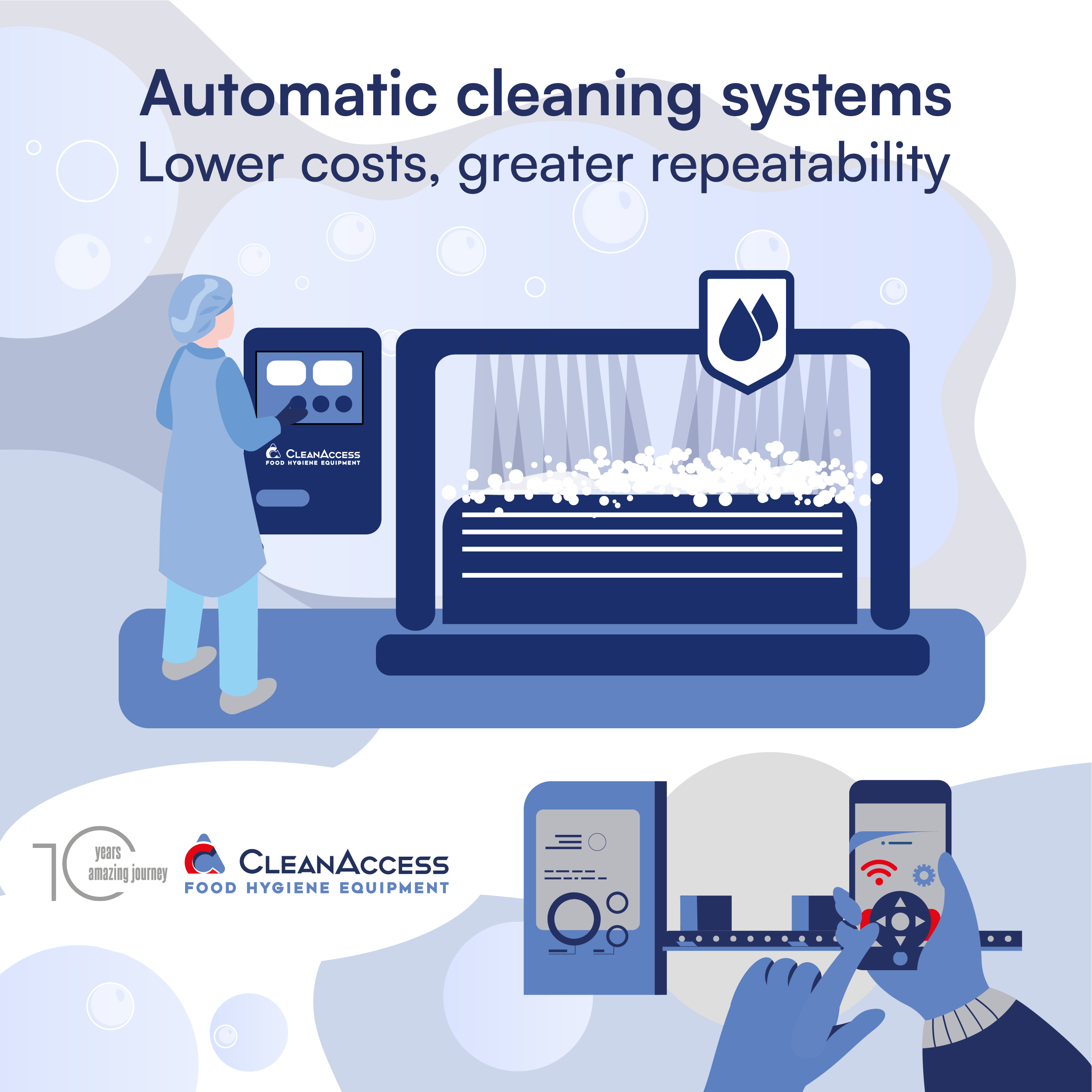In every production facility, the same question arises:
Have we truly done everything to ensure hygiene and safety – while also managing costs and reducing waste?
Not long ago, the answer was straightforward: well-defined procedures and experienced staff.
But times are changing.
Rising quality standards, staffing shortages in maintenance teams, and increasing costs of water, energy, and chemicals are creating new pressures.
Today, every unnecessary cleaning cycle, every extra minute spent on sanitation, results in real financial loss.
That’s why automated cleaning systems are becoming more relevant than ever.
They don’t replace operators – instead, they support them by taking over the most repetitive and critical parts of the process.
They deliver consistent cleaning quality, reduce cleaning time, and lower utility consumption.
What used to require a two-person team and three hours of work can now be managed with a single automated cycle – allowing staff to focus on other priorities.
But automation isn’t just about machines – it’s also about data.


